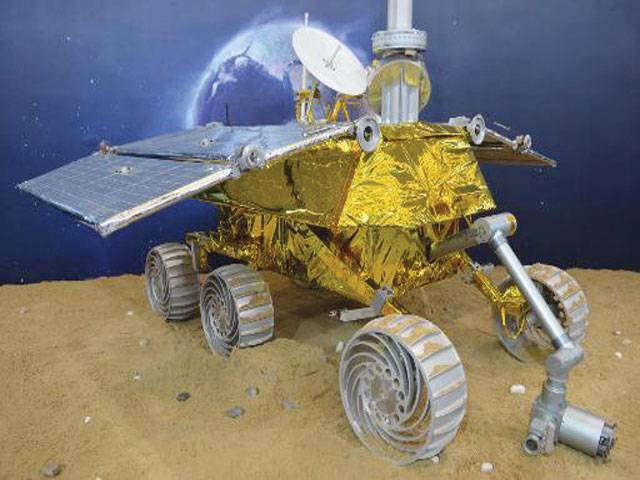AFP
BEIJING-A space module carrying China’s first lunar rover landed on the moon Saturday, state television said, the first soft landing on the moon in nearly four decades and a major step for Beijing’s ambitious space programme.
Scientists burst into applause as a computer generated image representing the spacecraft was seen landing on the moon’s surface via screens at a Beijing control centre, state broadcaster China Central Television (CCTV) showed, 12 days after Chang’e-3 blasted off on a Long March-3B carrier rocket. China is set to become just the third country to carry out a moon rover mission, following the United States and former Soviet Union, which made the last soft landing on the moon 37 years ago.
Saturday’s successful landing marks the latest step in an ambitious space programme which is seen as a symbol of China’s rising global stature and technological advancement, as well as the Communist Party’s success in reversing the fortunes of the once impoverished nation. It comes a decade after the country first sent an astronaut into space, and ahead of plans to establish a permanent space station by 2020 and eventually send a human to the moon. The probe touched down on an ancient 400-kilometre (250-mile) wide plain known in Latin as Sinus Iridum, or The Bay of Rainbows.
The landing was previously described as the “most difficult” part of the mission by the Chinese Academy of Sciences in a post on Chang’e-3’s microblogging page on Sina Weibo, a Chinese Twitter equivalent. The probe used sensors and 3D imaging to identify a flat surface. Thrusters were then deployed 100 metres (330 feet) from the lunar surface to gently guide the craft into position. The rover is set to be released from the landing craft in “a few hours”, according to a post on Chang’e’s Weibo page late Saturday.
Following separation, the rover will spend about three months exploring the moon’s surface and looking for natural resources. The rover can climb slopes of up to 30 degrees and travel at 200 metres per hour, according to the Shanghai Aerospace Systems Engineering Research Institute. The Chang’e-3 mission is named after the goddess of the moon in Chinese mythology and the rover vehicle is called Yutu, or Jade Rabbit, after her pet.
Thursday, April 18, 2024
China’s lunar rover lands on moon

Taylor Swift fans lose £1m in scams
April 18, 2024
Qawwal Aziz Mian remembered on 82nd birth anniversary
April 18, 2024
Climate change will make you poorer, says a new report
April 18, 2024
Political Reconciliation
April 16, 2024
Pricing Pressures
April 16, 2024
Western Hypocrisy
April 16, 2024
Policing Reforms
April 15, 2024
Storm Safety
April 15, 2024
Workforce inequality
April 17, 2024
New partnerships
April 17, 2024
Shikarpur crisis
April 17, 2024
Peace quest
April 17, 2024
Democratic harmony
April 16, 2024
ePaper - Nawaiwaqt
Advertisement
Nawaiwaqt Group | Copyright © 2024





